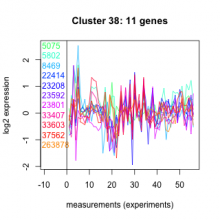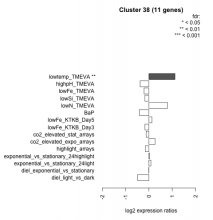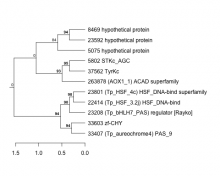263878 (AOX1_1) ACAD superfamilyThalassiosira pseudonana
| Chromosome | Product | Transcript Start | End | Strand | Short Name | |
|---|---|---|---|---|---|---|
| 263878 | chr_12 | (AOX1_1) ACAD superfamily | 318175 | 320481 | - | ACAD superfamily |
| NCBI ID | Ensembl Genomes exon ID |
|---|---|
| 7449398 | Thaps263878.2, Thaps263878.1, Thaps263878.3 |
| Expression Profile | Conditional Changes | Cluster Dendrogram | Discovered Potential cis-Regulatory Motifs |
|---|---|---|---|
Thaps_hclust_0038 |
 |
 |
   |
| T. pseudonana | P. tricornutum | P. tricornutum DiatomCyc | F. cylindrus | Pseudo-nitzschia multiseries | E. huxleyi | C. reinhardtii | A. thaliana | P. sojae |
|---|---|---|---|---|---|---|---|---|
| Not available | PHATRDRAFT_19979 | PHATRDRAFT_19979 | 210789 | 246220 | 436719 | Cre16.g689050.t1.1 | AT4G16760.1 | 556434 |

Add comment